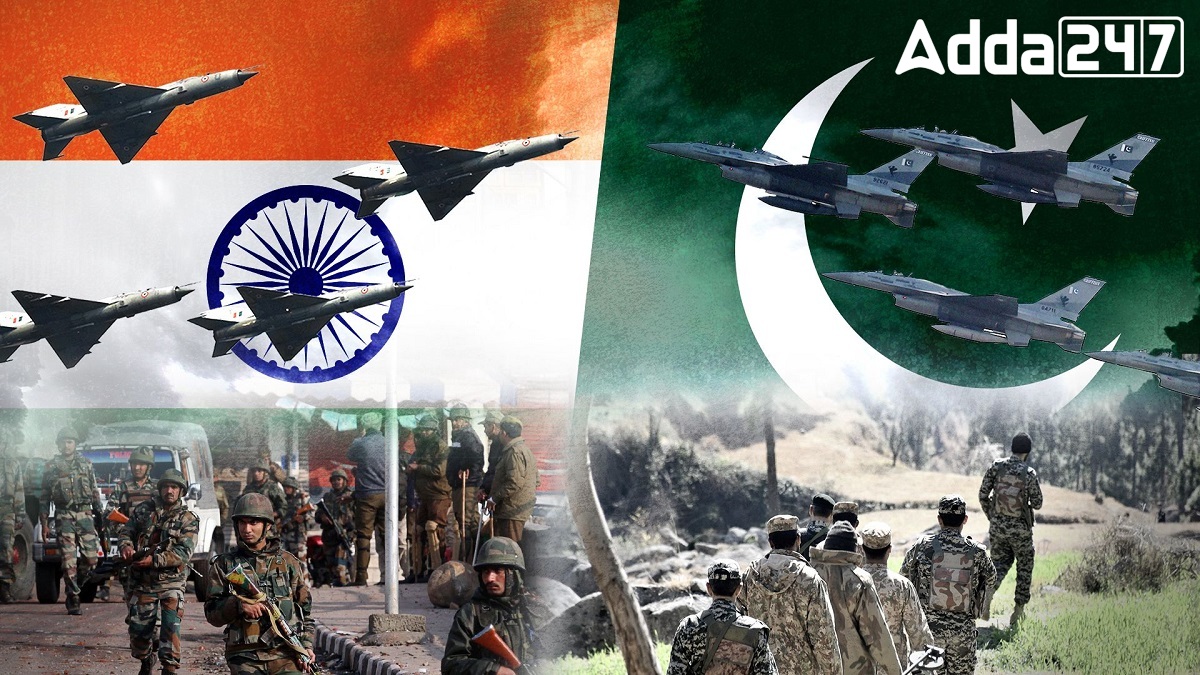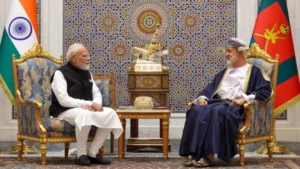India and Pakistan, formed from the Partition of British India in August 1947, have had a contentious relationship since their inception. The core issue driving their conflicts is Kashmir. Pakistan’s demand for Kashmir, a Muslim-majority region, to join it contrasts with India’s insistence on retaining Kashmir to maintain its multi-religious and multi-ethnic identity. This discord has led to four major wars and continuous skirmishes.
Major Wars and Conflicts
Indo-Pakistani War of 1947-1948
This conflict, also known as the First Kashmir War, began in October 1947 when Pakistan-backed tribal forces invaded the princely state of Jammu and Kashmir. The Maharaja of Kashmir, faced with the invasion, signed the Instrument of Accession to India, leading to Indian military intervention. The UN brokered a ceasefire on January 1, 1949, establishing the Line of Control (LoC), with India controlling about two-thirds of Kashmir and Pakistan the remaining areas.
Indo-Pakistani War of 1965
Initiated by Pakistan’s Operation Gibraltar aimed at inciting an insurgency in Jammu and Kashmir, this war led to a full-scale conflict between India and Pakistan. The war lasted 17 days and ended with a ceasefire brokered by the Soviet Union and the USA, formalized by the Tashkent Declaration. The conflict saw heavy casualties and significant engagements, including the largest tank battle since World War II.
Indo-Pakistani War of 1971
This war was driven by the Bangladesh Liberation War and political unrest in East Pakistan. India intervened following Operation Searchlight, which led to widespread atrocities. The conflict resulted in the creation of Bangladesh and the surrender of over 90,000 Pakistani troops. The Simla Agreement of 1972 saw India returning some captured territory to Pakistan.
Indo-Pakistani War of 1999 (Kargil War)
The Kargil War began when Pakistani troops infiltrated across the LoC into Indian territory in the Kargil district. India launched a military and diplomatic offensive to drive out the infiltrators, regaining control of most of the occupied territory. The war ended with Pakistan’s withdrawal under international pressure, marking a significant military defeat for Pakistan.
Strategic and Tactical Developments
Post-1947 Tactics: Early wars reflected British-era doctrines. By the 1960s, Pakistan adopted U.S. weaponry and strategies, while India’s military was influenced by Soviet doctrines until the 1970s. Post-2000, India has transitioned towards a U.S.-style military paradigm.
Nuclear Dimension: The 1999 Kargil War occurred when both nations possessed nuclear capabilities, heightening the stakes of conflict.
Recent Developments
Guerrilla Warfare and Skirmishes: Between wars, Pakistan has engaged in guerrilla warfare in Kashmir. The new millennium has seen an escalation in border skirmishes and terrorist activities.
Diplomatic Efforts and Failures: Various attempts by international mediators, including the U.S., to resolve the Kashmir dispute have had mixed results. Tensions spiked with incidents like the 2008 Mumbai attacks and the 2016 Uri attack.
Recent Trends: The 2019 revocation of Kashmir’s special status by India and subsequent military actions have exacerbated tensions. Despite a cease-fire in 2021, cross-border skirmishes continue.
Current Situation
Internal Issues: Kashmir remains volatile with frequent violence. The Indian government’s recent actions, including the crackdown on media and electoral changes, have intensified local unrest.
International Relations: U.S. and Chinese involvement and changing dynamics in South Asia impact the conflict. The U.S. has pushed for action against extremist groups, while China’s growing influence in Pakistan complicates the regional balance.




 Brazil Hands Over BRICS Presidency to In...
Brazil Hands Over BRICS Presidency to In...
 India–Oman CEPA Signed to Boost Trade an...
India–Oman CEPA Signed to Boost Trade an...
 India and Saudi Arabia Sign Visa Waiver ...
India and Saudi Arabia Sign Visa Waiver ...







